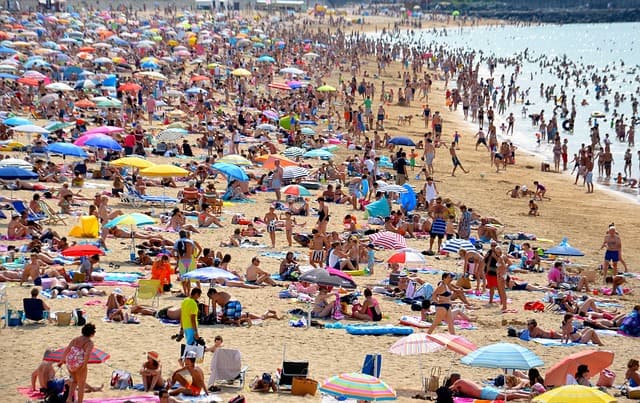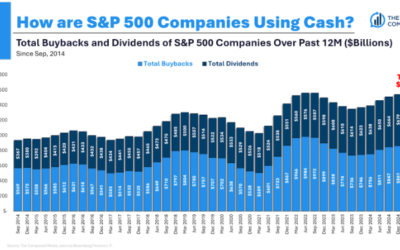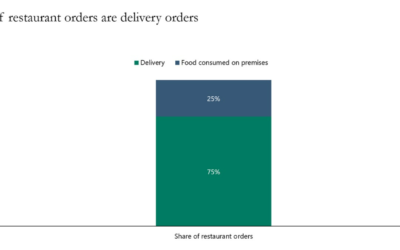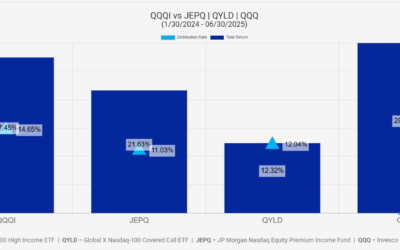There’s something happening to the upper middle class in the United States that no one is talking about. They are going through an existential crisis.
I first noticed it at the airport. A line 20 people deep for the American Express lounge. Then, once you get inside, more lines for food/drinks and not an open chair in sight.
Then I saw it in the housing market. I have friends with $10,000+ monthly mortgage payments on modest homes. Ten grand a month and they still don’t own a mansion. Today, buying a 3-bedroom apartment in Jersey City (where I live) would cost me anywhere from $9,300-$14,000 a month (all-in). I could rent the same unit for around $6,000-$7,000 a month.
Lastly, I saw it when I went on vacation to the Bahamas. I was told that Baha Mar was the place to go. It’s an expensive resort that has a waterpark, casino, and lots of dining options. The only problem? There isn’t enough space for everyone to enjoy everything. If you don’t book ahead, good luck getting a reservation at one of their prized restaurants. If you don’t wake up early, forget about getting chairs by the pool.
Picture it. You’re at one of the nicest resorts in one of the most prized vacation destinations in the world and there are literal millionaires scrambling to get pool chairs at 8AM. What the hell is going on?
I’ll tell you. The upper middle class is getting too big. There are too many people who are millionaires and multi-millionaires and there simply isn’t enough space to accommodate them. Why do you think the Amex lounge is a zoo? Why do you think house prices haven’t come down? Why do you think vacations evolved into cut throat competitions?
Because there are too many people with lots of money. I didn’t believe it at first, but it’s true. After running the numbers while doing research for my upcoming book, The Wealth Ladder, it was undeniable. What follows is just a preview of the deeper research and strategies I explore in the book.
To start, let’s consider the inflation-adjusted median net worth among U.S. households from 1989 to 2022 via the Survey of Consumer Finances (“SCF”):
As you can see, median net worth peaked in 2007, declined in the years following the Great Financial Crisis (“GFC”), and then bounced back during the early 2020s. If you were to examine the 25th percentile or the 75th percentile net worth, you’d see roughly the same thing. There was a peak in 2007, a crash in the 2010s, and finally a recovery in the 2020s.
But that’s not what you see if you looked at the top 10% of U.S. households by net worth (i.e. the 90th percentile). They experienced a far shallower decline following the GFC and started recovering in the mid-2010s:
By 2022 the top 10% were richer than ever.
Since 2007, the median net worth of U.S. households has increased from $173,151 to $192,700, up 11% in total after inflation. But among the top 10% of U.S. households, it increased from $1,302,640 to $1,936,900, a 49% surge!
While the SCF data doesn’t follow the same set of households over time, we can see in the data that there are more people with more wealth than ever before. To better understand this trend, I created a simple framework in The Wealth Ladder, my upcoming book (out July 22), that breaks wealth into six levels based on net worth. The levels are:
- Level 1: <$10k
- Level 2: $10k-$100k
- Level 3: $100k-$1M
- Level 4: $1M-$10M
- Level 5: $10M-$100M
- Level 6: $100M+
Using this framework, we can plot the percentage of households in each wealth level over time (ignoring Levels 5-6 which are sparsely populated in the SCF data):
As you can see, since 1989 the percentage of households in Level 1 (<$10k) has declined while the percentage of households in Level 4 ($1M-$10M) has increased significantly. In 1989, just 7% of households were in Level 4 (or above), but today it’s 18%.
Putting this into perspective, there are over 23 million millionaire households in the United States. You could fill the biggest stadium in the U.S. (Michigan Stadium which holds over 100,000 people) over 200 times and still have millions of millionaires left over.
This is what’s driving the tense competition for scarce resources among the upper middle class. Too many people got too rich and it’s impacting the housing market, vacation hotspots, and airport lounges alike.
As a result, they are going through somewhat of an existential crisis. People that have worked incredibly hard to get ahead are discovering that the lifestyle may not be what they had hoped. I know how out of touch this might sound while there are people out there living paycheck-to-paycheck. However, individuals in Level 3 ($100k-$1M) and Level 4 ($1M-$10M) experience many of the same stresses as people lower on The Wealth Ladder even though they have achieved some financial success.
How do I know? Because I’m one of them. I didn’t grow up with money, but I have some now. Despite this, my lifestyle isn’t all that lavish. While I don’t have to worry about what my groceries cost and can eat at nice restaurants on occasion, I still fly coach wherever I go. I still rent my apartment, commute to work, and deal with health issues like anyone else.
Yes, money can bring peace of mind, security, and many other great things, but it doesn’t buy as much as you think.
Unfortunately, the upper middle class are learning this the hard way. They are finding out that the exclusive wealth they thought they had isn’t so exclusive after all. What was once a marker of distinction has become a victim of popularity.
The Amex lounge didn’t die from a lack of interest. It died from too much.
Thank you for reading.
If this resonated with you, you’ll find even more in The Wealth Ladder, my upcoming book that explores wealth in greater depth and offers a framework for navigating these changes, no matter where you are on your financial journey. It’s out next week.
This is post 459. Any code I have related to this post can be found here with the same numbering: https://github.com/nmaggiulli/of-dollars-and-data









0 Comments